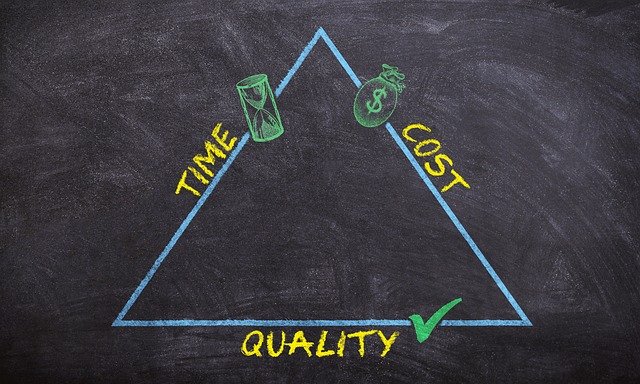Planning Seasonal Purchases to Align with Price Cycles
Timing purchases to seasonal price cycles can stretch your budget and reduce waste. This article outlines practical planning steps—budgeting, tracking price trends, using coupons and bundling, managing subscriptions, and handling shipping and returns—to help you buy smarter throughout the year.

Seasonal shopping is part strategy and part timing. By mapping expected price cycles for categories like clothing, electronics, and groceries, you can plan purchases to reduce costs and avoid impulse buys. This article walks through practical steps—budgeting, price monitoring, coupons and discounts, subscription management, sustainability considerations, and how to handle shipping, returns, and payments securely—so you can make better buying decisions across the year.
How should you use budgeting for seasonal purchases?
A seasonal budget separates planned purchases from discretionary spending. Start by listing recurring categories—clothing updates, gifts, seasonal tools, and bulk consumables—and estimate when each category typically sees discounts. Allocate a portion of monthly savings toward a seasonal fund, and set target price points based on past sales and quality expectations. Include buffer amounts for shipping, taxes, and potential returns so the fund covers total landed cost. Using a simple spreadsheet or budgeting app makes it easier to track progress and avoid overspending when a sale arrives.
How can pricemonitoring improve timing?
Price monitoring is the backbone of timing purchases. Use price-tracking tools, browser extensions, and retailer alerts to capture historical price patterns and receive notifications when items dip below your target. Monitor categories rather than single SKUs—similar products or models often follow the same cycle. Keep a watchlist for high-ticket items and sign up for retailer emails only for those items to avoid spam. Regularly checking price history helps you distinguish genuine markdowns from temporary promotions or artificially inflated “list” prices.
How to combine coupons, discounts, and bundling?
Coupons and sitewide discounts are most effective when combined with intentional timing. Stack manufacturer coupons, store coupons, and payment-related discounts (like card offers) where permitted. Bundling related items—such as care products with bulk consumables—can yield deeper per-unit savings and reduce shipping. Watch for flash promotions and loyalty-member events, but validate discounts with price history to ensure you’re getting value. For consumable goods, bulk purchases can lower per-unit cost, but balance bulk buying against spoilage risk and storage space.
Should you manage subscriptions and resale options?
Subscriptions can smooth prices and provide predictable perks; evaluate whether subscription costs match your usage. For groceries and essentials, delivery or membership plans that waive shipping may be worth the fee if you order frequently. Conversely, cancel trials before they auto-renew to avoid unexpected charges. Consider resale and resale value when buying higher-priced items: brands and product categories with strong resale markets (e.g., certain electronics or outdoor gear) can justify higher upfront costs. Always weigh product quality and warranty terms against potential resale value and lifetime cost.
What sustainability and local sourcing considerations matter?
Seasonal planning can support sustainability. Choose durable, repairable goods over disposable alternatives and factor quality into unit-price comparisons. Locally sourced items reduce shipping emissions and often support local suppliers; compare local prices against big-box discounts while accounting for shipping and time cost. When possible, prioritize reusable packaging and products with clear recycling or resale pathways. Sustainability choices may sometimes cost more up front but can offer lower lifetime cost and reduced environmental impact.
How do shipping, returns, payments, and pricing compare?
Real-world cost planning needs concrete comparisons across providers and expected cost ranges. Consider shipping fees, return policies, payment discounts, and membership costs when timing purchases. Factor in consumer rights and secure payment practices—use reputable payment methods, check return windows, and document transactions in case of disputes.
| Product/Service | Provider | Cost Estimation |
|---|---|---|
| Mid-range Bluetooth speaker (seasonal sale) | Amazon | $30–$80 |
| Bulk pantry items (per lb, assorted) | Costco | $0.75–$3 per lb |
| Mid-range winter jacket | Uniqlo | $40–$150 |
| Grocery/shopping membership (annual) | Walmart+ | $95/year or $12.95/month |
| Electronics mid-tier smartphone (sale window) | Best Buy | $200–$500 |
Prices, rates, or cost estimates mentioned in this article are based on the latest available information but may change over time. Independent research is advised before making financial decisions.
When comparing providers, prioritize net cost (price plus shipping and potential restocking fees) rather than headline discounts. Keep receipts and track return deadlines to protect your consumer rights. For onlinesecurity and payments, use two-factor authentication on accounts, prefer card-backed protections for disputes, and avoid public Wi-Fi when transacting. Monitoring price cycles, planning purchases into a seasonal budget, and balancing sustainability with cost can significantly improve overall value without sacrificing quality or convenience.
Planning seasonal purchases takes a mix of foresight and tools: set a budget, monitor prices, use coupons and bundling responsibly, manage subscriptions, consider sustainable and local options, and always account for shipping, returns, and secure payments. These habits help align buying behavior with price cycles and reduce surprises in the total cost of ownership.





